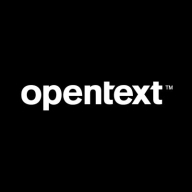

OpenText Functional Testing (UFT) and Tricentis Tosca are leading players in the software testing industry, each offering robust solutions for automated testing. UFT has a competitive edge in terms of compatibility, while Tosca's model-based test automation provides flexibility and ease of use.
Features: UFT supports a wide range of browsers and operating systems and integrates with various tools for GUI and API testing. Its platform compatibility is noteworthy. Tosca emphasizes a scriptless, model-based approach, beneficial for non-technical users, with robust integration capabilities and valuable dynamic test case design features.
Room for Improvement: UFT requires enhancements in memory usage and browser support, and improvements in continuous integration and programming language support. Tosca should enhance mobile testing capabilities and simplify its cost structure. Optimizing its centralized repository and performance for large implementations are also suggested.
Ease of Deployment and Customer Service: UFT excels in reliable on-premises deployment, although customer service is mixed in experiences. Tosca offers flexible on-premises and cloud deployments that suit modern enterprise needs, with generally positive customer service despite complexities in licensing and cost being a drawback.
Pricing and ROI: UFT is considered costly with a complex licensing model, yet it delivers substantial ROI for long-term automation projects across multiple technologies. Tosca is pricey for smaller businesses but offers significant ROI with its ease of use and test automation advantages once integrated into a company’s practices.
Automation is done very fast, leading to improvements in the QA process and reducing the time needed for test automation.
The development time using UFT can be cut down into half as compared to coding from scratch.
We can easily achieve a return on investment in one, two, or three years.
Tasks that typically take ten hours are reduced to two to three hours, representing a threefold productivity gain.
Support cases are easily created and attended to promptly, depending on urgency.
After creating a ticket, it takes three to five days for them to acknowledge it and then send it to somebody.
The technical support is rated eight out of ten.
My experience has been positive; their response to emails or phone calls in tech support is fast, usually between eight to ten hours.
Response through chat has been replaced by chatbots, which has impacted the experience.
There is no way to mark the importance or criticality of incidents when creating them.
Running them in parallel allows you to consume multiple runtime licenses and just execute the tests that don't have conflicting priorities and get through a lot of volume much quicker.
The tool can be installed on all computers used by developers or test automation engineers.
It covers a breadth of applications and products, demonstrating excellent scalability that I have seen in reality.
Scalability is excellent with Tricentis Tosca.
One of the key stability issues was that Windows would consume memory without releasing it, leading to regression testing crashes.
For performance and stability, Tricentis Tosca deserves a 10 out of 10.
The stability of Tricentis Tosca is rated ten out of ten. It is very stable.
I find stability issues when using the Vision AI feature; Tricentis Tosca is not very stable.
Incorporating behavior-driven development tests would enhance the capabilities of UFT One.
If it could move closer to a no-code or low-code solution, it might dominate the market again.
We frequently encountered stability issues when the browser dependency caused Windows to consume memory without releasing it, leading to crashes during regression testing.
Moving to a cloud-based application rather than a desktop one could improve Tosca.
The Vision AI implementation works very slowly, affecting the speed of our work.
If a button in an application changes, Tricentis Tosca should be smart enough to detect the change and still execute the script seamlessly.
It's cheaper than Tricentis Tosca but more expensive than some others.
The pricing or licensing policy of OpenText is a bit expensive, however, it's one of the best solutions in the market.
There are many open-source tools with no cost, and there are no-code tools that are less expensive than UFT.
The pricing for Tricentis Tosca is extremely high, and I rate it as ten in terms of expense.
A yearly license costs around 20,000 euros.
For enterprise customers, the cost is manageable because it provides solutions for multiple applications they want to automate.
UFT supports Oracle, SAP, PeopleSoft, and other non-web applications, making automation feasible.
The object repository is one of the best in the market, allowing creation of a repository useful for all tests.
OpenText UFT One offered valuable features by allowing us to build up libraries to streamline repetitive tasks, making scripting much easier.
It allows for drag-and-drop functionality and demo automation in SAP-based applications, which can be challenging with other automation tools.
The most useful features of Tricentis Tosca include API scanning, basic web application automation, and data validation capabilities.
The modular approach reduces scripting effort by at least fifty percent, which significantly cuts down on the script development time.
| Product | Market Share (%) |
|---|---|
| Tricentis Tosca | 17.6% |
| OpenText Functional Testing | 8.4% |
| Other | 74.0% |


| Company Size | Count |
|---|---|
| Small Business | 20 |
| Midsize Enterprise | 13 |
| Large Enterprise | 71 |
| Company Size | Count |
|---|---|
| Small Business | 23 |
| Midsize Enterprise | 24 |
| Large Enterprise | 71 |
OpenText Functional Testing provides automated testing with compatibility across technologies, browsers, and platforms. It targets APIs, GUIs, and applications like SAP and Oracle for efficient test automation, emphasizing usability and integration with tools such as Jenkins and ALM.
OpenText Functional Testing offers wide-ranging automation capabilities for functional and regression testing, API testing, and automation across web, desktop, and mainframe applications. It supports script recording and object identification, appealing to less technical users. Despite its advantages, it grapples with memory issues, stability concerns, and a challenging scripting environment. Its VBScript reliance limits flexibility, generating demand for enhanced language support and speed improvement. Users appreciate its role in continuous integration and deployment processes, managing test data efficiently, and reducing manual testing efforts.
What are the key features of OpenText Functional Testing?In industries like finance and healthcare, OpenText Functional Testing is leveraged for end-to-end automation, ensuring streamlined processes and accuracy in testing. Many companies utilize it for efficient test data management and integrating testing within continuous integration/deployment operations.
Tricentis Tosca offers model-based testing that supports both technical and non-technical users through a user-friendly interface, enabling scriptless automation and seamless integration with UI and non-UI applications.
Tosca's modular approach enhances test maintenance and reuse while delivering comprehensive automation for diverse testing environments. Backed by risk-based testing and automated data management, it supports end-to-end testing across API, SAP, and desktop applications. Tosca's integration capabilities extend to environments like Salesforce, PHP webshops, and mobile apps, effectively enhancing Agile team workflows. Despite its strengths, room remains for improved reporting, object recognition, and more efficient upgrade processes. Enhancing documentation and mobile testing support could further elevate its functionality for many.
What key features does Tricentis Tosca offer?In retail, Tricentis Tosca automates inventory and transaction testing, ensuring efficient system updates. Financial services employ it for regulatory compliance through automated test scenarios in mainframe and PDF environments. Telecommunication companies utilize Tosca for API testing, aligning services across network platforms seamlessly.
We monitor all Functional Testing Tools reviews to prevent fraudulent reviews and keep review quality high. We do not post reviews by company employees or direct competitors. We validate each review for authenticity via cross-reference with LinkedIn, and personal follow-up with the reviewer when necessary.